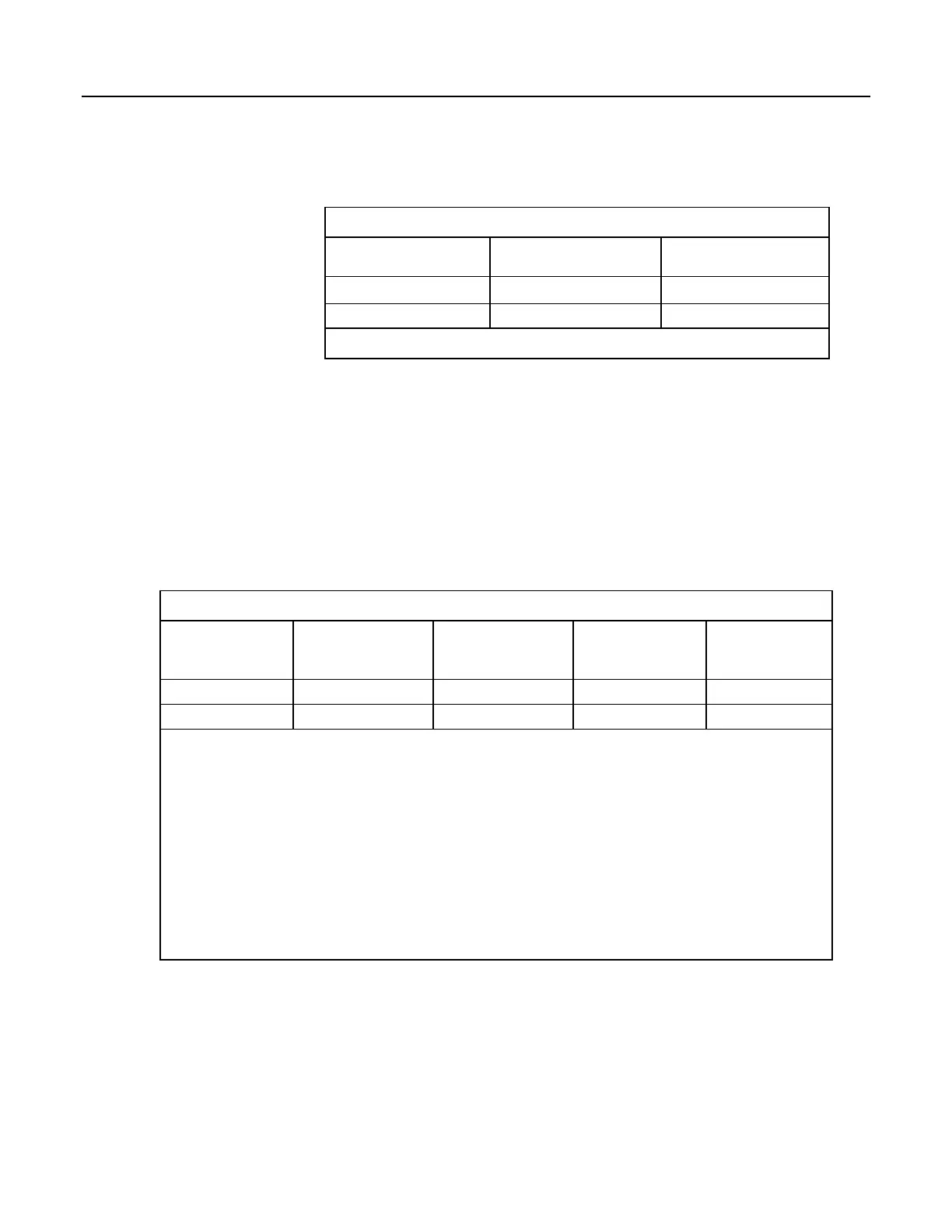to-D (p. 507) conversion as listed in table ac Noise Rejection on Small Signals (p. 317).
Table 60. Ac Noise Rejection on Small Signals
1
Ac Power Line
Frequency
Measurement Integration
Duration CRBasic Integration Code
60 Hz 16.667 ms
_60Hz
50 Hz 20 ms
_50Hz
1
Applies to all analog input voltage ranges except mV2500 and mV5000.
If rejecting ac-line noise when measuring with the 2500 mV (mV2500) and 5000
mV (mV5000) ranges, the CR1000 makes two fast measurements separated in
time by one-half line cycle. A 60 Hz half cycle is 8333 µs, so the second
measurement must start 8333 µs after the first measurement integration began.
The A-to-D conversion time is approximately 170 µs, leaving a maximum input-
settling time of approximately 8160 µs (8333 µs – 170 µs). If the maximum
input-settling time is exceeded, 60 Hz line-noise rejection will not occur. For 50
Hz rejection, the maximum input settling time is approximately 9830 µs (10,000
µs – 170 µs). The CR1000 does not prevent or warn against setting the settling
time beyond the half-cycle limit. Table ac Noise Rejection on Large Signals
(p.
317)
lists details of the half-cycle ac-power line-noise rejection technique.
Table 61. Ac Noise Rejection on Large Signals
1
Ac-Power Line
Frequency
Measurement
Integration
Time
CRBasic
Integration
Code
Default
Settling
Time
Maximum
Recommended
Settling Time
2
60 Hz 250 μs • 2
_60Hz
3000 μs 8330 μs
50 Hz 250 μs • 2
_50Hz
3000 μs 10000 μs
1
Applies to analog input voltage ranges mV2500 and mV5000.
2
Excitation time and settling time are equal in measurements requiring excitation. The CR1000 cannot excite VX excitation
terminals during A-to-D conversion. The one-half-cycle technique with excitation limits the length of recommended excitation and
settling time for the first measurement to one-half-cycle. The CR1000 does not prevent or warn against setting a settling time
beyond the one-half-cycle limit. For example, a settling time of up to 50000 µs can be programmed, but the CR1000 will execute
the measurement as follows:
1. CR1000 turns excitation on, waits 50000 µs, and then makes the first measurement.
2. During A-to-D, CR1000 turns off excitation for ≈170 µs.
3. Excitation is switched on again for one-half cycle, then the second measurement is made.
Restated, when the CR1000 is programmed to use the half-cycle 50 Hz or 60 Hz rejection techniques, a sensor does not see a
continuous excitation of the length entered as the settling time before the second measurement — if the settling time entered is
greater than one-half cycle. This causes a truncated second excitation. Depending on the sensor used, a truncated second excitation
may cause measurement errors.
Signal-Settling Time
Settling time allows an analog voltage signal to settle closer to the true magnitude
prior to measurement. To minimize measurement error, signal settling is needed
when a signal has been affected by one or more of the following:
• A small transient originating from the internal multiplexing that connects a
CR1000 terminal with measurement circuitry
317

